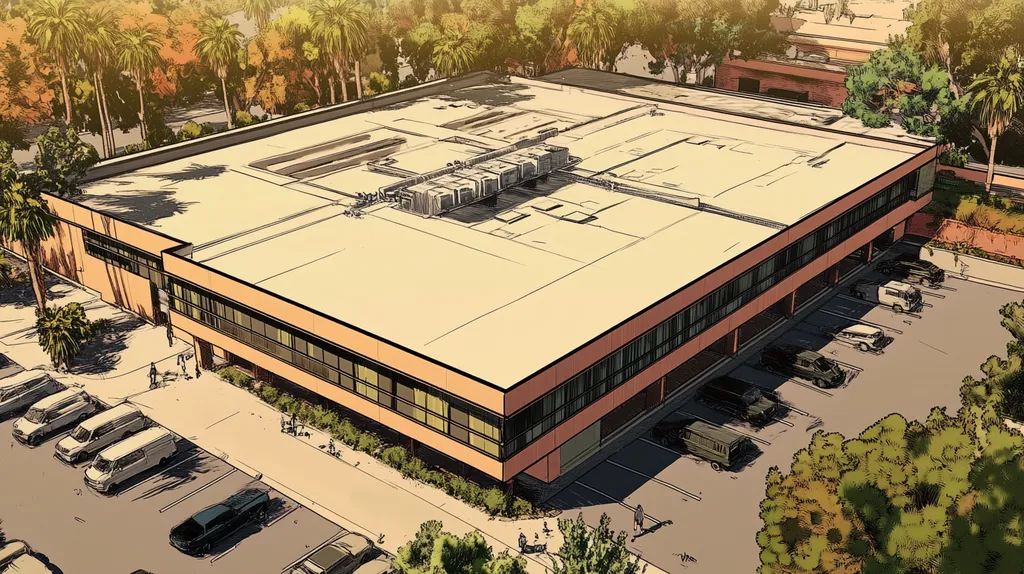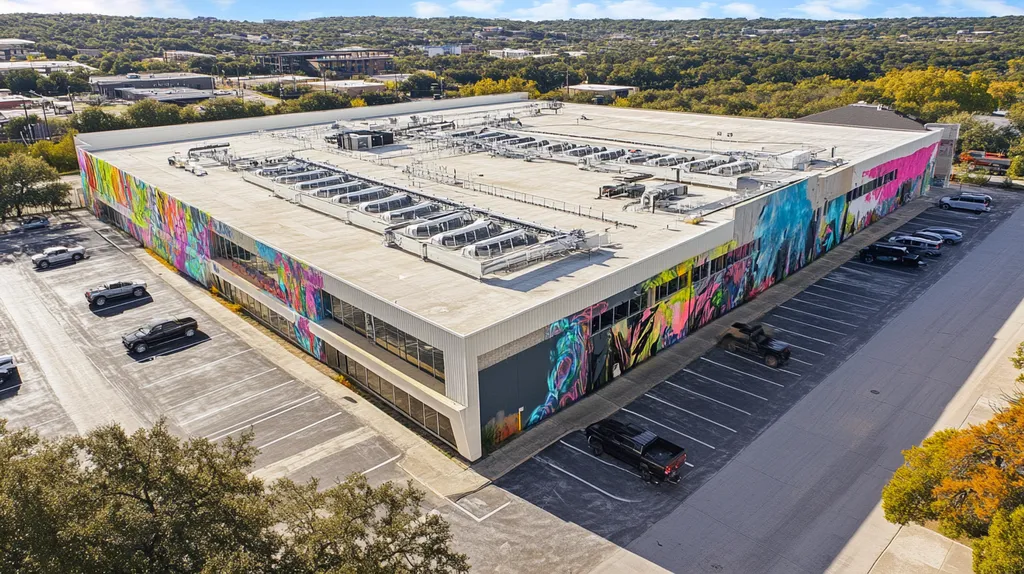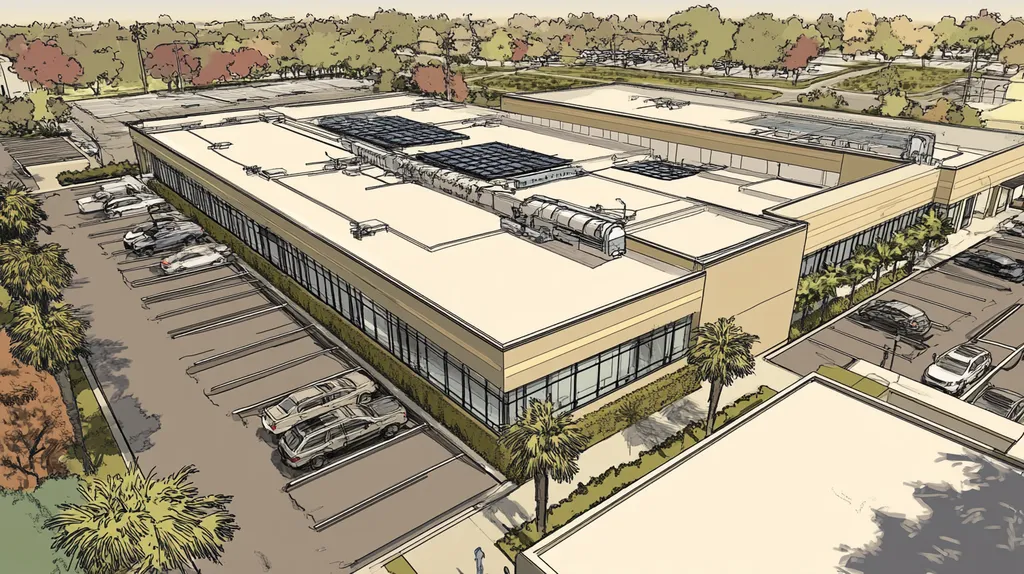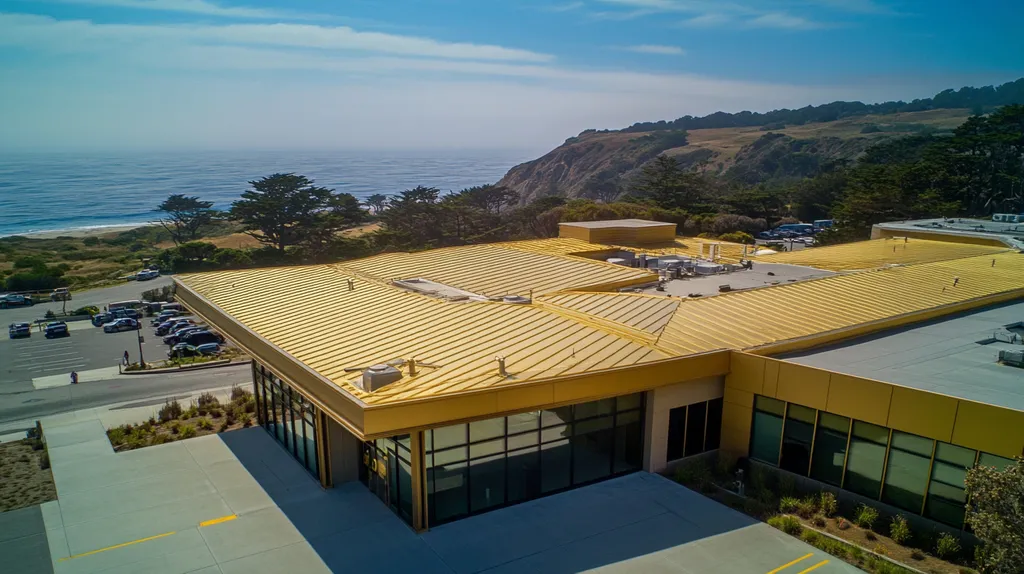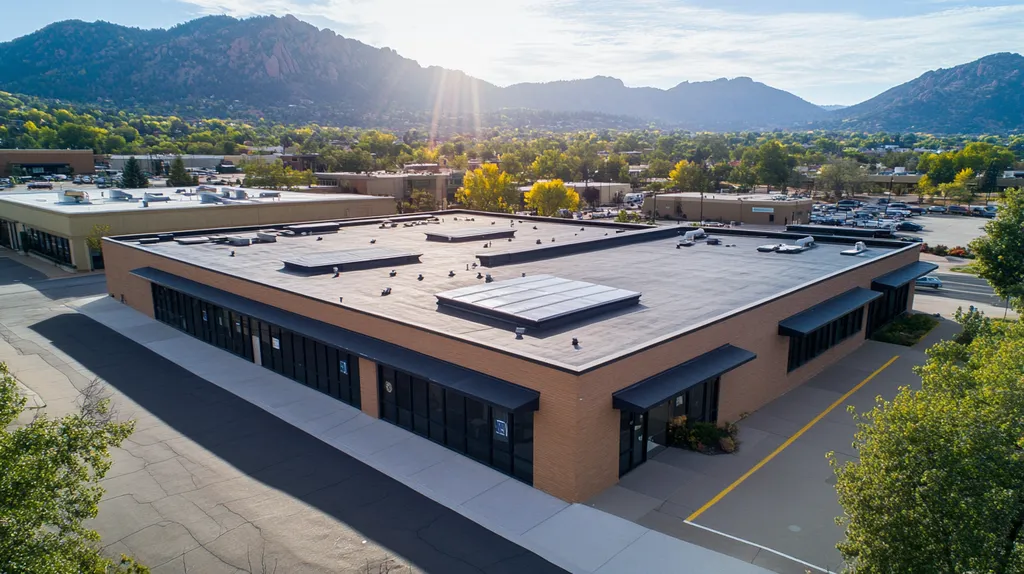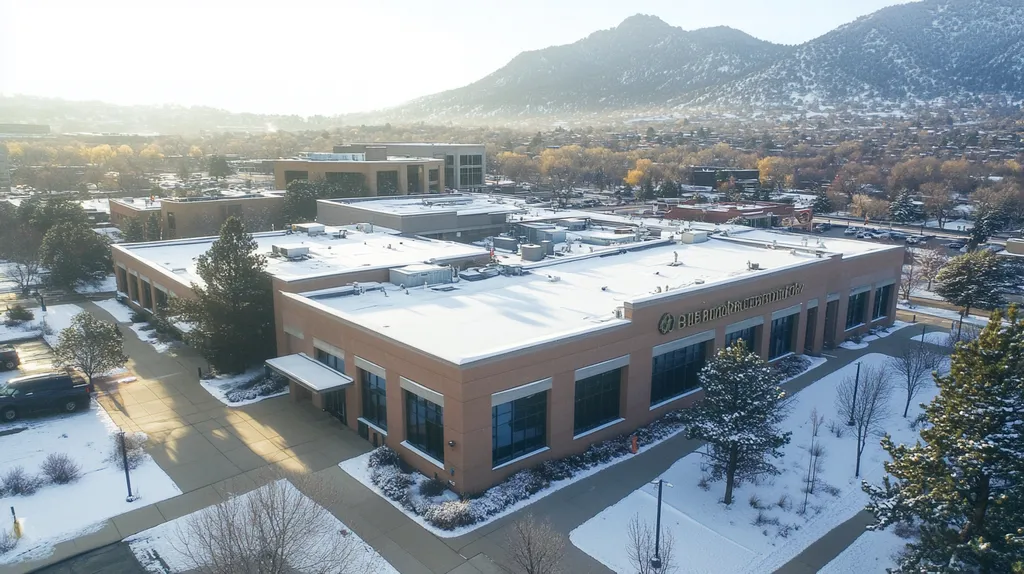Commercial roof installations represent one of the most significant capital investments property owners face, with project delays costing up to $50,000 per day in operational disruptions and potential damage.
Despite these high stakes, industry data shows that over 70% of commercial roofing projects exceed their planned timelines due to persistent misconceptions about installation complexity and duration.
Understanding the true factors that drive commercial roof installation schedules – from material selection and weather impacts to regulatory requirements – helps property owners avoid costly timeline errors and make more informed project decisions.
SECTION 1: COMMON MISCONCEPTIONS
Commercial roof installations represent significant capital investments, with failed projects potentially costing businesses millions in repairs, inventory damage, and operational disruptions. Yet many property owners and facility managers base crucial decisions on persistent industry myths that oversimplify the installation process. Understanding the realities behind these misconceptions helps prevent costly timeline errors and enables more effective project planning.
Myth: Commercial Roofs Install Within Days
The “quick installation” myth remains one of the most damaging misconceptions in commercial roofing. While residential projects might complete in days, commercial installations typically require weeks or even months of carefully coordinated work.
Pre-installation phases alone can span several weeks, including structural assessments, material procurement, and crew scheduling. Even a moderately-sized 20,000-square-foot commercial roof requires extensive preparation before the first material is placed.
The removal phase presents its own timeline challenges. Stripping away old roofing systems while protecting the building’s interior from weather exposure demands methodical, section-by-section work that cannot be rushed without risking damage.
Installation itself involves multiple layers and components that each require proper curing time. Attempting to accelerate these essential processes often results in premature system failure and voided warranties.
Misunderstanding Roof Material Impact on Timelines
Different roofing systems demand vastly different installation approaches. Single-ply membranes like TPO may install relatively quickly in ideal conditions, while built-up roofing systems require multiple days between layers for proper curing.
Material availability significantly impacts project timing. Custom-fabricated components such as metal flashings or specialized membrane sizes may require weeks of lead time before installation can begin.
Environmental requirements vary by material type. Some systems can only be installed within specific temperature ranges or humidity levels, while others require completely dry conditions for proper adhesion.
Quality control measures also vary by material choice. Certain systems demand extensive testing and inspection protocols that must be factored into the overall timeline.
Overlooking Weather and Complexity Factors
Weather conditions control more than just daily work schedules. Temperature swings can affect material expansion rates, while humidity impacts curing times and adhesion strength. Even seemingly minor weather variations can add days or weeks to completion times.
Building complexity creates additional timeline variables. Roofs with multiple elevations, numerous penetrations, or elaborate drainage systems require extra attention to detail and installation time.
Existing conditions often reveal hidden challenges once work begins. Deteriorated deck sections, wet insulation, or outdated flashing details may need addressing before new installation can proceed.
Access limitations present another often-overlooked factor. Restricted loading zones, limited crane positions, or occupied tenant spaces can all impact how quickly materials and equipment reach the work area.
SECTION 2: PRACTICAL IMPLICATIONS
Commercial roof installations directly impact business continuity, with inadequate planning leading to costly operational disruptions. Industry data shows unplanned roofing delays can cost businesses up to $50,000 per day in lost productivity, inventory damage, and emergency repairs. Property owners must carefully weigh three critical factors that influence project timelines: operational scheduling, design complexity, and regulatory compliance.
Scheduling and Business Operation Disruptions
Strategic scheduling requires balancing multiple operational priorities against installation requirements. Retail facilities often need night work to protect customer traffic, while manufacturing plants must coordinate around production schedules to prevent contamination risks.
Building occupancy patterns dictate viable work windows. Office buildings may require weekend-only installations, while warehouses might accommodate continuous workdays if proper containment systems protect inventory.
Weather considerations compound scheduling challenges. Summer heat restrictions on certain materials may force work into early morning hours, while winter installations often require specialized heating equipment that extends daily setup times.
Project phasing becomes critical for minimizing disruptions. Breaking installations into manageable sections allows businesses to maintain partial operations while protecting sensitive areas from exposure.
Impact of Roof Design Complexity on Duration
Roof geometry dramatically influences installation timelines. Simple rectangular layouts might allow crews to install 5,000 square feet daily, while complex configurations with multiple elevations can reduce productivity by 40-60%.
Mechanical equipment density creates additional complexity. Roofs with numerous HVAC units, exhaust fans, and other penetrations require extensive detailing work that can triple installation time for affected areas.
Edge conditions and transitions demand precise craftsmanship. Parapets, expansion joints, and elevation changes require careful waterproofing details that cannot be rushed without compromising system integrity.
Drainage complexity impacts both installation speed and system reliability. Internal drains, scuppers, and cricket systems require perfect slope transitions that often necessitate multiple laying passes.
Permitting and Inspection Delays
Municipal approval processes vary widely between jurisdictions. While some cities process permits within days, others require multiple department reviews that can extend several weeks before work authorization.
Code compliance inspections create mandatory pause points. Most jurisdictions require separate inspections for tear-off, deck repair, insulation, and final installation – each potentially adding 24-48 hours to the timeline.
Historical districts and specialized zones bring additional oversight. Properties in these areas often face architectural review boards or preservation committees that can extend the approval process by months.
Documentation requirements have expanded significantly. Modern building departments frequently demand detailed installation drawings, wind uplift calculations, and drainage studies before issuing permits.
SECTION 3: COST OF MISINFORMATION
Inaccurate timeline expectations for commercial roof installations create devastating financial ripples throughout organizations. When property owners base decisions on misconceptions about installation speed and complexity, what begins as a capital improvement project can cascade into millions in unexpected costs, lost revenue, and permanent building damage.
Beyond the immediate budget impact, rushed installations driven by unrealistic schedules often result in premature system failure. This compounds expenses through emergency repairs, damaged inventory, and disrupted operations that could have been avoided with proper planning.
Financial Risks from Unrealistic Timelines
Compressed installation schedules typically trigger a chain reaction of costly compromises. When crews rush to meet unrealistic deadlines, critical steps get abbreviated or skipped entirely, leading to immediate leaks and system failures that require expensive emergency repairs.
The financial impact extends far beyond the roof itself. Rushed installations frequently result in incomplete air/vapor barriers and poor drainage details that allow moisture infiltration throughout the building envelope, damaging inventory, equipment, and interior finishes.
Labor costs spike dramatically when unrealistic timelines force crews to work overtime or in poor conditions. These premium labor rates can increase project costs by 35-50% compared to properly scheduled installations.
Business interruption expenses multiply when rushed work requires multiple repair visits. Each emergency response disrupts operations and typically costs 3-4 times more than planned maintenance.
Hidden Costs of Poor Roof Preparation
Inadequate deck inspection and preparation account for over 60% of premature commercial roof failures. When preparation time gets compressed, underlying problems go undetected until they compromise the new system.
Moisture trapped in existing materials creates massive hidden costs. Wet insulation reduces energy efficiency by up to 40% while accelerating deck corrosion and membrane degradation.
Poor surface preparation prevents proper membrane adhesion, leading to billowing, tears, and separated seams. These defects typically appear within 2-3 years, long after warranties expire.
Improper drainage preparation causes ponding that degrades materials and overloads structures. Just two inches of standing water adds 10 pounds per square foot of dead load to the roof system.
Budget Overruns Due to Supply and Weather Issues
Material availability issues create severe budget pressure when not properly anticipated. Rush shipping fees and material substitutions can increase supply costs by 25-40% compared to planned procurement.
Weather delays compound exponentially when adequate schedule contingencies aren’t included. Each rain day typically adds 2-3 recovery days for drying and rescheduling, quickly consuming profit margins.
Seasonal temperature and humidity restrictions impact material installation and curing. Working outside these parameters to maintain unrealistic schedules often voids manufacturer warranties.
Crew availability becomes problematic when weather delays cascade across multiple projects. Finding qualified replacement labor on short notice can increase costs by 50-75% over standard rates.
SECTION 4: REALITY CHECK
Commercial roof installation timelines represent a critical planning challenge that directly impacts business continuity and profitability. When facility managers underestimate project durations, the consequences cascade through operations, potentially disrupting tenant activities and compromising building protection. Understanding realistic timelines helps prevent costly mistakes while ensuring proper installation quality.
Typical Commercial Roof Installation Durations
A commercial roof installation represents a complex, multi-phase process that demands careful coordination. Even moderately-sized projects require extensive preparation, including structural evaluations, material staging, and safety system implementation.
Base installation times vary significantly by project scope. A 10,000 square foot flat roof typically requires 1-2 weeks for completion, while larger or more complex structures exceeding 50,000 square feet may need 3-6 weeks of dedicated installation time. (source: Litespeed Construction)
Quality control measures add essential time to the process. Proper moisture testing, seam inspection, and final verification cannot be rushed without risking system failure.
Weather conditions frequently extend base durations. Rain delays not only stop work but require additional drying time before installation can resume.
Role of Roof Type and Size on Timeline
Material selection dramatically impacts installation speed. Single-ply membranes like TPO and EPDM generally install more quickly than built-up or modified bitumen systems that require multiple layers.
Surface preparation requirements vary by system type. Some materials demand extensive cleaning and priming, while others need minimal deck preparation.
Attachment methods influence crew productivity. Mechanically fastened systems typically progress faster than fully adhered applications that require additional curing time.
Component complexity affects installation rates. Areas with numerous penetrations, equipment curbs, or architectural features require extensive detail work that reduces daily coverage rates.
Common Causes of Installation Delays
Material availability presents a frequent challenge. Supply chain disruptions can delay critical components, forcing schedule adjustments or system modifications.
Structural issues discovered during tear-off often require immediate attention. Deteriorated decking, compromised supports, or hidden water damage demand repairs before new installation proceeds.
Permitting and inspection timing creates mandatory pauses. Required reviews at critical stages can add days between installation phases.
Labor availability impacts project flow. Skilled crew shortages or competing project demands can extend completion times, particularly during peak roofing seasons.
SECTION 5: EVIDENCE-BASED ALTERNATIVES
Commercial roof installations represent substantial investments requiring meticulous planning and execution. Industry data reveals that over 70% of installation delays stem from inadequate material planning, weather impacts, and contractor coordination issues. These preventable setbacks often cascade into significant cost overruns and operational disruptions. Property owners who embrace evidence-based planning approaches consistently achieve better outcomes through realistic material procurement strategies, weather-informed scheduling, and qualified contractor selection.
Planning with Accurate Material Lead Times
Material procurement challenges continue disrupting commercial roofing projects nationwide. Supply chain volatility means common roofing components now require 8-12 weeks of lead time, compared to historical 2-3 week windows.
Successful material planning starts with early manufacturer engagement. Establishing direct communication channels with multiple suppliers helps identify potential bottlenecks before they impact project timelines.
Critical path materials demand special attention. Items like custom-fabricated edge metal, specialized membrane sizes, or specific insulation thicknesses often face extended production schedules that can derail installation timing.
Strategic material staging also influences project flow. Coordinating deliveries to match installation sequences while respecting site storage limitations helps maintain steady work progress.
Incorporating Weather Contingencies in Scheduling
Commercial roof installations typically take 1 to 5 weeks, with weather conditions significantly impacting completion times. Single-ply systems generally install faster than built-up roofing, but all systems remain vulnerable to climate disruptions. (source: Roper Roofing and Solar)
Effective scheduling requires analysis of historical weather patterns. Planning installations during traditionally stable weather periods reduces the risk of extended delays and emergency protection measures.
Temperature-sensitive materials need careful timing consideration. Many adhesives and sealants have specific application temperature ranges that limit viable working hours during extreme seasons.
Recovery periods after weather events must factor into timelines. Wet conditions often require 24-48 hours of drying time before work can safely resume.
Selecting Certified Contractors for Efficiency
Contractor selection directly impacts installation quality and timeline adherence. Certified installers bring documented experience with specific systems, reducing the risk of application errors that cause delays.
Proper staffing levels drive project efficiency. Professional contractors maintain adequate crew sizes to handle planned work volumes while responding to unexpected challenges.
Equipment availability influences daily productivity. Well-equipped contractors maintain redundant critical tools and machinery to prevent mechanical delays from derailing progress.
Quality control processes separate professional installers from less qualified options. Established inspection protocols catch potential issues early, preventing costly rework that extends project duration.
SECTION 6: TEST AND VERIFY
Quality verification during commercial roof installation represents a critical control point where minor oversights can transform into catastrophic failures. Industry data shows that over 80% of premature roof failures trace back to installation defects that proper testing would have caught. Without rigorous verification protocols, even the highest quality materials and most detailed plans cannot guarantee long-term performance.
Monitoring Installation Progress Against Schedule
A typical commercial roof installation progresses through distinct phases including preparation, tear-off, installation, and final inspection, with each phase requiring specific verification steps to ensure quality. North American Roofing reports that preparation and permitting typically spans a week, while tear-off requires 1-3 days and installation takes 1-2 weeks for standard projects. (source: North American Roofing)
Daily progress documentation through digital imaging and detailed activity logs creates an invaluable record for warranty compliance. These records should track completed sections, material usage, and crew time allocation.
Weather monitoring becomes essential for maintaining installation quality. Temperature, humidity, and precipitation readings must be recorded regularly to verify proper installation conditions were maintained.
Schedule variance tracking helps identify potential problems before they cascade into major delays. Compare actual progress against planned milestones daily, noting any deviations that require immediate attention.
Inspecting Roof Preparation and Material Quality
Material verification starts with delivery inspection to confirm products match specifications exactly. Check batch numbers, manufacturing dates, and physical condition before accepting materials on site.
Substrate preparation requires thorough documentation including moisture readings, adhesion tests, and deck condition reports. These baseline measurements prevent disputes about pre-existing conditions.
Interface details between different materials demand extra scrutiny during preparation. Verify proper priming, appropriate overlap dimensions, and correct attachment methods before covering these critical transitions.
Equipment calibration checks ensure consistent installation quality. Verify proper settings on hot air welders, adhesive sprayers, and mechanical fastening tools at the start of each work period.
Post-Installation Quality Assurance and Warranty Verification
Systematic testing protocols must cover every aspect of the completed installation. This includes seam probing, adhesion testing, and electronic leak detection where applicable.
Visual inspections alone cannot guarantee system integrity. Core samples from representative areas provide physical verification of proper layer installation and adhesion.
Drainage testing under controlled flooding helps identify low spots or flow restrictions. Document water removal times and patterns to verify proper slope and drainage function.
Final warranty documentation must include all required testing results, installation photos, and material records. Create a comprehensive close-out package that supports future warranty claims and maintenance planning.
The Bottom Line
Commercial roof installations represent a $12 billion annual investment across U.S. businesses, with timeline errors costing property owners an estimated $50,000 per day in operational disruptions.
Understanding realistic installation durations – typically 2-6 weeks for standard projects – helps prevent the cascading financial impacts of compressed schedules and rushed work.
Property owners who embrace evidence-based planning through accurate material lead times, weather contingencies, and certified contractor selection consistently achieve better project outcomes.
Most importantly, thorough quality verification during each installation phase remains critical, as industry data shows 80% of premature roof failures trace back to preventable installation defects that proper testing would have identified.
FREQUENTLY ASKED QUESTIONS
Q. Do commercial roofs install within days as commonly believed?
A. No, commercial roof installations typically take weeks or months, not days. Preparations, such as assessments and material procurement, can span several weeks, and rushing installations can lead to major issues.
Q. How can scheduling impact commercial roof projects?
A. Scheduling affects overall business operations, with careful planning necessary to minimize disruptions. Installation work should align with occupancy patterns, requiring strategic timing to avoid conflicts with daily activities.
Q. What are financial risks associated with unrealistic timelines for commercial roofs?
A. Unrealistic timelines can lead to rushed jobs that compromise quality and increase costs. Issues such as leaks or damage to inventory can result in substantial, unplanned expenses and operational interruptions.
Q. What are typical durations for installing commercial roofs?
A. Installation durations can vary significantly. A 10,000 square foot roof may take 1-2 weeks, while larger or complex roofs could require 3-6 weeks. Weather and site conditions can extend these timelines further.
Q. How can evidence-based planning help commercial roof projects?
A. Using evidence-based planning improves project outcomes by accurately accounting for material lead times and weather impacts. This proactive approach reduces the likelihood of costly delays and enhances overall project efficiency.
Q. Why is quality verification important in commercial roof installations?
A. Quality verification prevents premature failures. Regular monitoring and testing during installation can identify issues early, ensuring long-term performance and compliance with warranty requirements.
Q. How do weather conditions affect commercial roof installations?
A. Weather can significantly impact roofing schedules and installation quality. Extreme temperatures or wet conditions may delay work, while inadequate weather planning can lead to improper material curing and potential failures.

